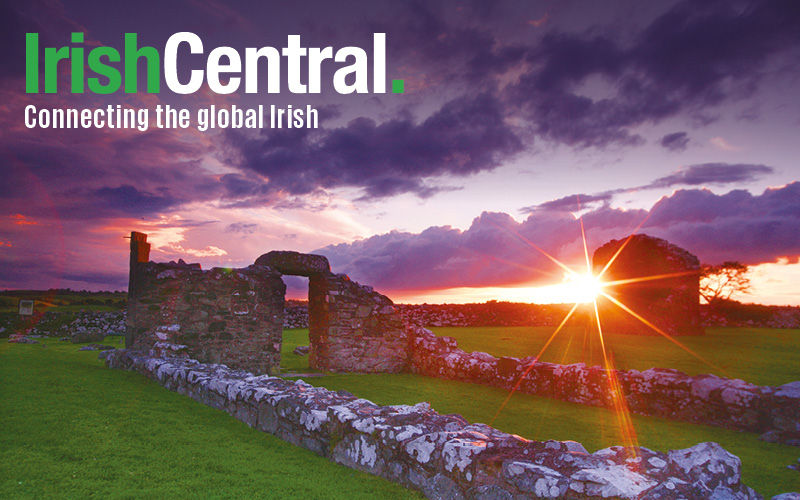The United Irish Counties Association of New York will launch a new book examining the support the Irish county organizations gave to the revolutionary leaders in the planning, formation and aftermath of the 1916 Rising.
Titled The 1916 Easter Rising: New York and Beyond, the 186 page book will go on sale at an Easter Rising commemoration luncheon on Sunday, April 24 at Antun’s in Queens Village.
A first for the United Irish Counties, the committee of writers consists of 16 delegates of the individual county organizations. “We relate the 16 members symbolically to the 16 martyrs executed by the British,” John J. Garvey, chair of the committee, told the Irish Voice.
“It's a commemorative effort to mark the centenary, which was originally planned as a pamphlet, but there was quite a bit of enthusiasm so it developed into a book,” explains Gerry O'Shea, who was tasked with bringing the book to completion.
“At our meetings it was proposed that we should address the lives and contributions of all 16 of the men who were executed. Especially the ones who spent time in the United States, with an eye to how that developed their growth as revolutionaries.”
O'Shea himself writes the book's overview, provides a timeline to key events in the U.S. in the lead up to the Rising, and he gives an account of the 1916 leaders who came to America.
AOH National Historian Mike McCormack submitted an article on Jeremiah O'Donovan Rossa, the Irish Fenian leader and prominent member of the Irish Republican Brotherhood. Born in Cork, he would eventually be exiled to America where he eventually joined Clan na Gael and the Fenian Brotherhood in New York.
In his long life he would agitate for Ireland's independence, and become a legendary figure among nationalists. His funeral in Glasnevin Cemetery in Dublin in 1915 was a huge affair. He is perhaps known best in death for the graveside oration given at his funeral by Patrick Pearse, who after lamenting his passing delivered a stirring call to arms that ended with the famous lines:
“They think that they have pacified Ireland. They think that they have purchased half of us and intimidated the other half. They think that they have foreseen everything, think that they have provided against everything; but, the fools, the fools, the fools! They have left us our Fenian dead, and while Ireland holds these graves, Ireland unfree shall never be at peace.”
Board member Mae O'Driscoll studied the life of influential Cork man Diarmuid Lynch, who is, O'Shea says, perhaps “not widely known” now but who once was the president of the Gaelic League of the state of New York and later upon his return to Ireland would become the divisional representative for Munster of the Irish Republican Brotherhood, and a key player in the Rising.
United Irish Counties member Dorothy Foley wrote about Patrick McCartan, the Tyrone man who emigrated to the U.S. and would later play a part in the revolutionary movement (and its aftermath) in both the U.S. and Ireland.
Garvey writes about Sam O'Reilly, who participated in the Rising and saw first hand the revolution and its aftermath. Historian Ed Shevlin, a retired sanitation worker currently earning his master’s degree in Irish studies at NYU, writes about John “The Yank” Kilgallon, a native of Far Rockaway, who as a young man fetched up in Dublin and fought in 1916.
“Of all the Irish American towns in America, it had to be a Rockaway guy that wound up in the middle of the bloody battle at the Post Office,” Shevlin recently told The New York Times.
Over the course of several days of fierce fighting on Sackville Street (now O'Connell Street) Kilgallon famously broke into the nearby wax museum, stole the costume of Queen Elizabeth I and returned to the fight wearing it. An unforgettable and uniquely Irish insult to the British soldiers pummeling the city center.
In further essays the role of the Irish county associations in the 1916 Rising are explored, the contributions of the GAA and the nationalist movements are also reflected upon, as are the significant contributions of the Cumman na mBan, the organization of Irish revolutionary women, and the role of religious orders like the Carmelites in the struggle for Irish independence.
“I was amazed to read there was a very active Irish nationalist movement in Connecticut before and after the Rising,” says O'Shea. “The level of activity here and between Ireland and the U.S. deserves to be remembered and celebrated. This book does that.”
For more information, email [email protected].




Comments